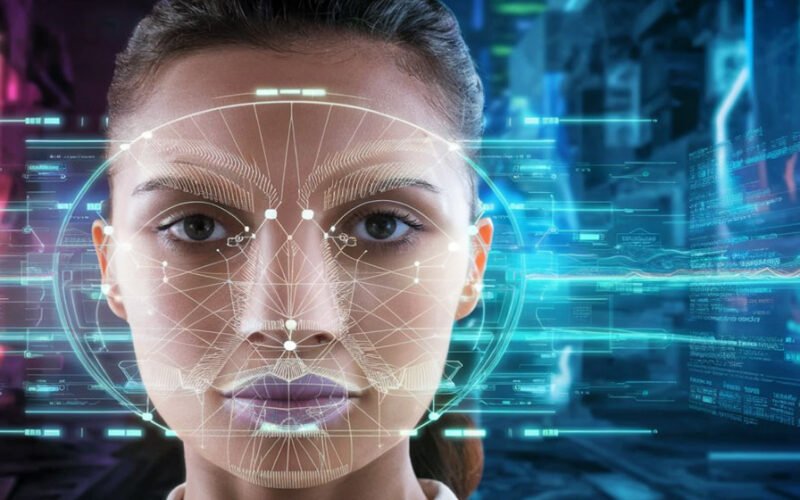Insurance fraud is estimated to amount to $308.6 billion per year, to businesses and consumers of the United States. This important financial impact has been offset in many classes of insurance including life, health, property, and casualty. The increasing number of insurance frauds worldwide indicates the necessity of a solution to combat identity forgery in this realm.
Therefore, AI facial recognition is critical in dissuading the threats regarding insurance fraud. It is an advanced technology embedded with intelligent algorithms and machine learning that accurately and quickly identifies individuals.
This article will delve into the necessity of AI face recognition and how it is evolving the digital landscape of the insurance sector.
Facial Recognition Technology—Explained
Facial recognition technology (FRT) is a revolutionary advancement that corresponds human faces from digital images or video frames against a database to confirm their identity. Its contactless nature makes it particularly appealing for various applications.
Face recognition is very common in personal identification, policing, and ID verification during account opening in the financial sector. This technology is useful in expanding security features by providing the identification feature without contact. Part of this process is liveness – the recognition that the biometric comes from a live human being, not a photo or video. In addition to enhancing individual protection and financial actions. Biometric face recognition with liveness detection also deters fraud efforts. Enhancing dependability and safety in processes as diverse as financial service and criminal justice.
The Integration of AI and ML in Facial Recognition
AI & ML integration has led to drastic and effective changes in security, personalization, and identification of processes in insurance. AI works on increasing the accuracy of facial recognition techniques whereas referred to by ML it becomes easier for such systems to change and improve.
This integration aids in identifying facial characteristics, expressions, and even emotions with impressive accuracy. It assists in areas such as law enforcement, secure banking, and targeted marketing. However, ethical concerns around privacy and data security are growing as they prompt discussions on establishing regulations to protect individual rights while maximizing the benefits of AI and ML technology.
Facial Recognition System and Its Functionality
AI facial recognition is an intelligent technology aimed at recognizing people by examining and contrasting their facial characteristics from digital photos. This is the process through which digital face recognition operates:
-
Image Capture: The procedure starts with obtaining an image or video frame of the face through a camera. This can occur in real-time or by using saved digital images.
-
Face Detection: The system identifies the presence of a face in the image. It differentiates the face from the surrounding environment and other items.
-
Face Alignment: The identified face is subsequently aligned to fit the necessary format for examination. This process entails modifying the face’s orientation to a standardized position.
-
Feature Extraction: The system extracts distinctive facial characteristics to identify the user. For example, the spacing of the eyes, the structure of the jaw, lips, ears, forehead, and the outline of the face.
-
Face Comparison: The extracted features are compared against a stored facial feature database. Cultivated algorithms and machine learning methods are employed to identify a match.
-
Identification/Verification: The system identifies the person and provides the final results based on the comparison.
Facial Recognition Online for Deterring Dishonest Insurance Claims
AI facial recognition is the modern and optimal form of biometric verification, providing quick and accurate results. It also plays a significant role in deterring prevalent financial fraud, especially as insurance, a massive financial sector, faces numerous fraudulent attempts that can disrupt economic stability. To combat such fraud, digital face recognition not only identifies potential threats but also incorporates deepfake detection, which can distinguish between real and manipulated video or image inputs. This adds a crucial layer of security, ensuring that only legitimate individuals register for and access insurance benefits.
AI Face Recognition for Various Insurance Claims
Insurance is mainly of these kinds. It is just for understanding that facial recognition can be used for this purpose and to identify the insured:
- Health Insurance
- Life Insurance
- Workers’ Compensation
- Property Insurance
- Disability Insurance
- Medicare and Medicaid
- Auto Insurance
- Commercial Insurance
- Casualty Insurance
- Travel Insurance
Advantages of Facial Recognition in the Insurance Sector
Integrating AI face recognition in insurance verification offers numerous advantages to the companies, such as the following:
-
Fraud Prevention: Face recognition technology helps verify identities and reduces the risk of fraudulent claims by accurately matching their faces with stored images.
-
Enhanced Security: Face recognition enhances security protocols within the insurance industry. It ensures that private data and businesses are open only to the permitted individuals.
-
Improved Customer Experience: The effectiveness of face recognition is also beneficial to Customers as it saves their time in identity checks and makes the entire process smooth.
-
Cost Savings: The use of face recognition technology can therefore help minimize fraud while at the same time helping insurance companies cut their costs.
-
Regulatory Compliance: AI face recognition can help insurers comply with regulatory requirements, such as Know Your Customer (KYC) and Anti-Money Laundering (AML).
-
Detailed Record Keeping: Face recognition aids in maintaining thorough and accurate records of customer registrations and claims.
Final Words
AI facial recognition services are crucial for verifying the identity of insurance claimants. This is a stringent way of recognizing the person who is claiming the insurance and verifies the person quickly. It is a faster process as it utilizes advanced artificial intelligence and also takes assistance with biometrics patterns.
Integrating AI face recognition technology allows insurance companies to reduce fraudulent claims and improve the customer experience. It offers a seamless and contactless verification process that can be done remotely and efficiently. This process ensures that the identity verification process is streamlined with other protocols.










